Disruption of the Plasmodium falciparum Life Cycle through Transcriptional Reprogramming by Inhibitors of Jumonji Demethylases
- PMID: 32272012
- PMCID: PMC7748244
- DOI: 10.1021/acsinfecdis.9b00455
Disruption of the Plasmodium falciparum Life Cycle through Transcriptional Reprogramming by Inhibitors of Jumonji Demethylases
Abstract
Little is known about the role of the three Jumonji C (JmjC) enzymes in Plasmodium falciparum (Pf). Here, we show that JIB-04 and other established inhibitors of mammalian JmjC histone demethylases kill asexual blood stage parasites and are even more potent at blocking gametocyte development and gamete formation. In late stage parasites, JIB-04 increased levels of trimethylated lysine residues on histones, suggesting the inhibition of P. falciparum Jumonji demethylase activity. These epigenetic defects coincide with deregulation of invasion, cell motor, and sexual development gene programs, including gene targets coregulated by the PfAP2-I transcription factor and chromatin-binding factor, PfBDP1. Mechanistically, we demonstrate that PfJmj3 converts 2-oxoglutarate to succinate in an iron-dependent manner consistent with mammalian Jumonji enzymes, and this catalytic activity is inhibited by JIB-04 and other Jumonji inhibitors. Our pharmacological studies of Jumonji activity in the malaria parasite provide evidence that inhibition of these enzymatic activities is detrimental to the parasite.
Keywords: JIB-04; Jumonji inhibitors; Plasmodium falciparum; demethylases; gametocytes; malaria; transcriptional reprogramming.
Conflict of interest statement
The authors declare no competing financial interest.
Figures
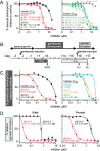
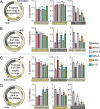
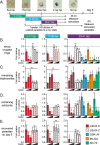

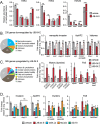
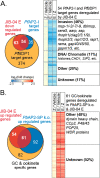
References
-
- WHO (2018) World malaria report 2018, WHO, Geneva.
-
- Flueck C.; Bartfai R.; Volz J.; Niederwieser I.; Salcedo-Amaya A. M.; Alako B. T.; Ehlgen F.; Ralph S. A.; Cowman A. F.; Bozdech Z.; Stunnenberg H. G.; Voss T. S. (2009) Plasmodium falciparum heterochromatin protein 1 marks genomic loci linked to phenotypic variation of exported virulence factors. PLoS Pathog. 5 (9), e1000569.10.1371/journal.ppat.1000569. - DOI - PMC - PubMed

